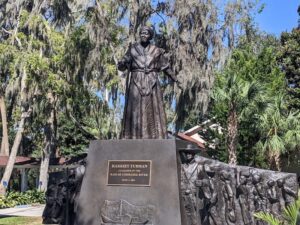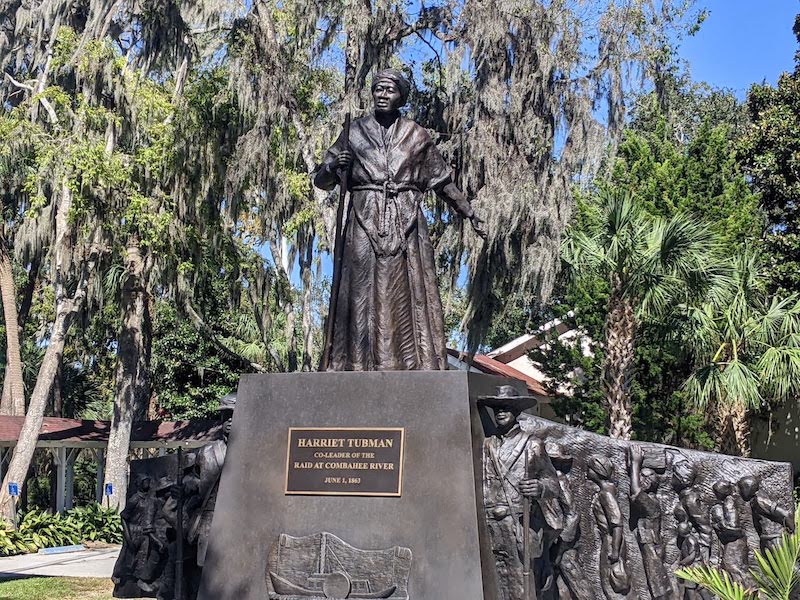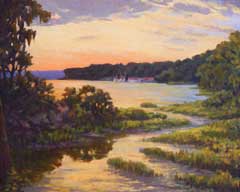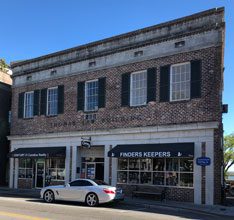
Harriet Tubman monument, photo by Luke Frazier
I once interviewed the Director of the Cleveland Museum of Art and one thing he said has stuck with me: it’s okay for art to sometimes be difficult. You don’t have to always try and reduce it to the lowest common denominators or simple aesthetics.
What I took from that is that there is often context and nuance embedded in works of art, and there can be complicated meanings and messy back stories that can add richness to the experience of that piece of art. That sometimes we are called to “work at it” a little bit and stretch out of our comfort zones.
The challenge for me is that I firmly believe that art ought to be celebrated by all and should not be a source of intimidation or a restrictive cultural currency. Museums aren’t just for the highbrows. So while I want the experience of connecting to works of art to be universally accessible, I acknowledge that effort on our part is part of the equation.
But what about the realm of public art, specifically the monument-memorial variety? Outside the realm of galleries there are sculptures everywhere; they are part of the landscape. They proclaim values and inspire awe; they recognize sacrifice and bear witness. They call on us directly to take note of something deemed important. Historical ties notwithstanding, they tend to blur into the background after a while, especially if we’re talking about ones in the area where you live.
This all brings me to Beaufort, my new home, and as of this past June, the home of the new Harriet Tubman Monument by sculptor Ed Dwight. It sits on the grounds of Tabernacle Baptist Church on Craven Street, and I’ve visited a half-dozen times, richer for it each time. It ties back directly to the question of challenges beneath the surface of a seemingly simple artistic presentation of a “hero,” and the risky proposition of standing for something eternal in a fly by night world.
The Tubman monument centers on the Combahee River raid in early June 1863 that freed more than 750 enslaved individuals from several plantations. Depending on how it’s shaded, Harriet Tubman was either a co-leader (with God or a mere mortal Lieutenant) or the solo leader of 100 Black Union soldiers on gunboats who stealthily ran up the river and then blew steam whistles to get the exodus started. According to a former army counterintelligence officer who spoke at the groundbreaking ceremony back in 2017 (as recorded for Gullah/Geechee TV episode 217) Harriet paved the way for women like her to work in the intelligence field and lead military operations. This was news to me as someone who only associated Tubman with underground railroad lore.
The monument itself is a wondrous combination of motion and declaration. A seven foot tall Tubman gazes into a brighter future with reflective intention while her left arm extends behind her to lift up those in bondage. Somehow sculptor Dwight illuminates night, and the feeling of Harriet and the other figures moving under the cover of dark persists no matter what time it is when I’m there.
On both sides of Harriet’s elevated platform the soldier’s gazes are steady, they are functionaries to her vision and the righteous inevitability of the raid’s success. But it’s the figures that wing out behind the soldiers that speak the loudest to me, in their release from bondage being represented in a kind of steady reveal from the solid bronze background.
Dwight masterfully suggests movement with individual leanings and body positioning but keeps facial details nonexistent. They are orderly and aligned with the angelic Harriet. I imagine that a more chaotic scene took place on the actual night with men, women, and children racing to the boats representing freedom. These are trekkers of purpose and hope.
These figures stand in contrast to Dwight’s work in several Underground Railroad monuments he has done. Those figures are more detailed and traditionally in motion. At the Tubman Monument they seem to float and reverberate, almost in a watery, shimmery glint. One view looking from the end of the line strikes me as wave-like ripples, individuals delivered to the shore of humanity after a journey in darkness.
In this sense we are all part of their emergence as well, with Tubman’s historical record being deservedly expanded in a visible monument about the Combahee River raid. I have much to learn about Southern history, and I recognize the need to tread humbly in the narratives. So while enjoying the gorgeous sculptural expression there on Craven Street, I’m fully aware that there are many more roads through the story, including that of the sculptor himself.
Ed Dwight is a former Airforce test pilot and the first Black astronaut candidate who faced racism and eventually left the military, turning to fine arts in his 40’s after an engineering career. Look him up.
What he has in common with Harriet Tubman, that instrument of human freedom, is the concern for adding meaning to the world. Separated by more than a century, they both cared enough to uplift others in their own way. Dwight put it simply in a CBS news interview when asked about his legacy, saying, “The legacy that I want is that I gave a damn, and that’s it.” We already know that is true for Harriet.









